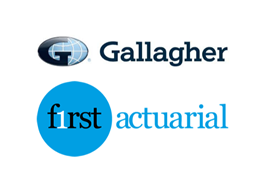Schemes looking to multi-asset strategies to generate positive cash flow while derisking may have to turn to specialist managers to reduce their potentially significant governance burden.
Recent research suggests that, in the current low-yield environment, income-generating solutions might help match the near-term payment obligations of defined benefit schemes.
Commenting on the release of UBS’ 2016 Pension Fund Indicators, head of UK and Ireland Ian Barnes explained that as more and more private sector schemes become cash flow negative, they may encounter difficulties meeting their short-term liabilities.
While a traditional LDI portfolio can match near-term projected cash flows, record low yields have meant short-dated bonds now seem a costly investment choice, and one which could impact upon schemes’ allocations to capital growth, required to close funding gaps.
Arguably multi-asset is a new asset class. There’s a degree of education necessary for trustees to really understand what they’re getting into
Andrew Parker, Law Debenture
“There needs to be a third bucket which is built just as carefully as the growth [portfolio],” said Barnes, adding that trustees are looking for solutions that derisk while simultaneously attaining growth with limited volatility.
“There is no single asset class which provides this,” the UBS report concludes, “so schemes may wish to allocate across a range of asset classes to achieve their desired income and growth objectives.”
Getting the balance right
Diversified income solutions might therefore include assets with varying liquidity, volatility, and opportunities for capital growth.
Achieving the right mix of those assets is therefore highly contingent on the investment objectives of a particular scheme, according to David Rae, head of client strategy and research at Russell Investments.
Source: UBS Hedge Fund Solutions Industry research, Bloomberg, Hedge Fund Research, Barclays Capital
“For each scheme, they face a unique challenge depending on the profile of their liabilities, their appetite for risk and ultimately the objectives they are trying to achieve,” he said.
He said schemes with a longer time horizon might be able to access illiquidity premiums through income-generating assets like infrastructure and real estate debt, but warned that investors must be sure of their future liquidity requirements.
“Things can change quite rapidly for a pension scheme that could require them to need that liquidity sooner,” he added.
Education, education
Naturally the complexity of such strategies presents a significant governance burden, especially for smaller schemes with fewer in-house capabilities.
Tara Gillespie, vice-president of Redington’s investment consultancy practice, said this makes multi-class active managers an attractive choice for trustees of smaller pension funds.
“Investing in these funds takes the burden of tactical asset allocation away from the trustees. The managers will decide when to enter and exit sub-asset classes, geographies or sectors, depending on where they see value,” she said.
Gillespie added that trustees would still need to carefully monitor manager performance, and ensure the strategy of their chosen diversified fund matches their specific objectives.
Even if trustees decide to enter the multi-asset income sector via specialist managers, they should still pay close attention to the strategy chosen, according to Andrew Parker, independent trustee at Law Debenture.
“Arguably it’s a new asset class,” he said. “There’s a degree of education necessary for trustees to really understand what they’re getting into.”
He also urged schemes to consider any allocations to short-term income strategies as part of their wider investment strategy, and in the context of their changing funding requirements.
“It’s a very useful tool in combination with a number of other investments to diversify the risk and look to maximise potential gain across a broad portfolio,” he said.














